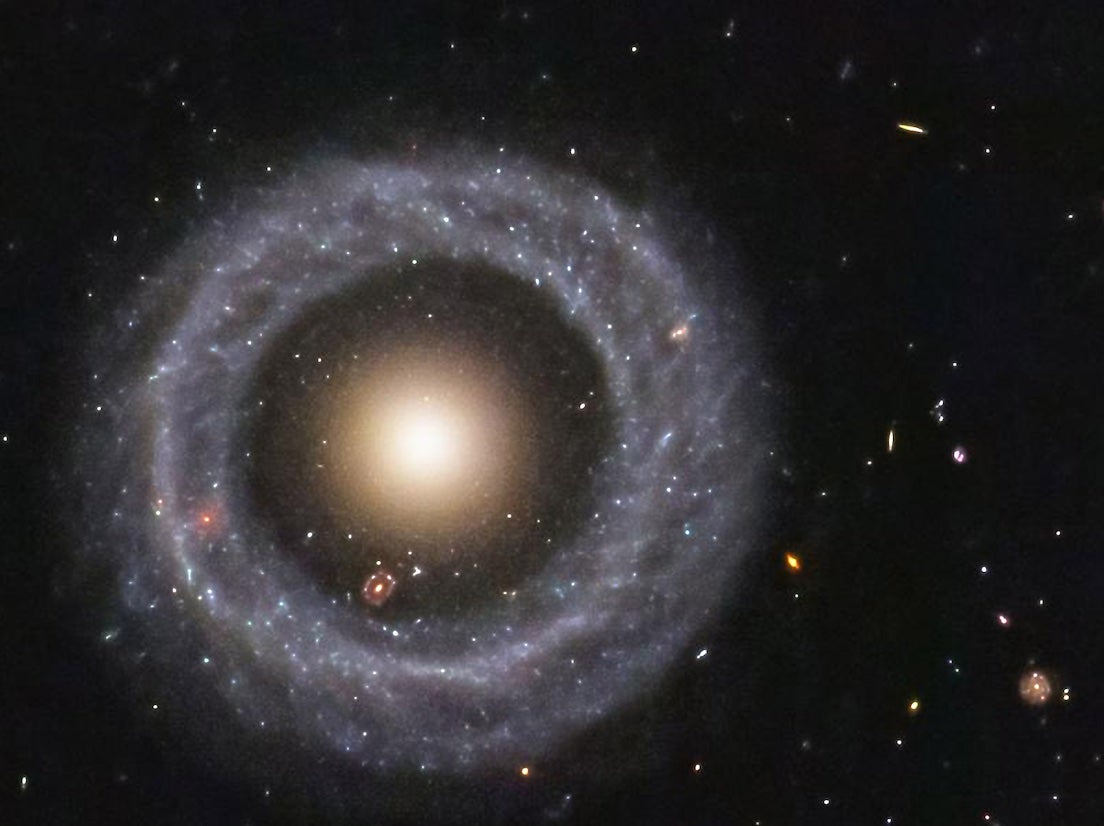
In the October 1950 issue of The Astronomical Journal, American astronomer Arthur Hoag states that the object “appears to be a perfectly symmetrical planetary nebula.” However, he acknowledged that some of its characteristics did not match those of other planetary nebulae, so he also suggested that instead it might be “a new species among the ‘pathological’ galaxies.”
Today, Hoag’s Object is one of the finest, most perfect examples of a rare galaxy type: a ring galaxy. It’s over 600 million light-years away in the constellation Serpens and spans over 120,000 light-years. At the center, there’s a sphere of older reddish stars, looking very much like an elliptical galaxy. Moving outward, there’s a seemingly empty gap until arriving at the ring. The ring is made up of young blue stars highlighted by spokes that appear curved, signs of rotation. Astronomers have been asking how the galaxy evolved since 1950.
Ring galaxies can result when a smaller galaxy collides with a larger, disk-shaped galaxy. This collision generates a density wave within the disk, resulting in a distinct ringlike structure. But there seems to be no evidence of a past collision in the case of Hoag’s Object. Besides, the core of Hoag’s Object is spheroidal, while the nucleus of a barred spiral is typically disk-shaped.
Look again at the gap between the ring and central core. Notice anything? It’s another ring galaxy that’s much farther away. What are the extraordinary odds that a rare ring galaxy is seen in the gap of another ring galaxy?









